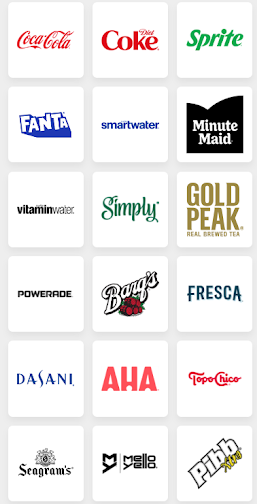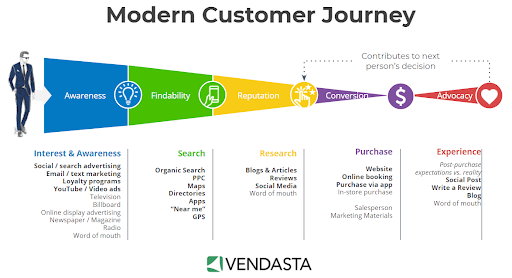The Power of Product Diversification in Digital Marketing
Product diversification refers to the act of ensuring a business offers more than one product—and potentially many products or services. It’s a strategy that aims to ensure businesses can weather economic challenges and remain competitive in the market.
Get data-backed tips for boosting small business tech adoption. Download our report “Lessons from the Digital Chasm” now.
For digital agencies, product diversification is important for more than boosting agency revenue. Because the landscape in the digital marketing industry changes so swiftly, the need for products can come and go quickly. Agencies that aren’t diversified might find that sales of their only product plummet in this environment, leaving them scrambling to catch up.
Why is product diversification important in digital marketing?
Product diversification provides a number of benefits for digital agencies that are hard to ignore.
Increased market share and customer base
When boosting startup agency revenue, adding another product line to your agency makes sense. If local businesses already work with you for SEO, for example, they might be likely to pay for social media ad management services too. This works outside a startup environment as well.
Diversifying your product offerings helps you grow your business by building a larger customer base.
For example, small businesses typically only need one website, so if you offer website development services for single-practitioner pediatrician offices, you have a finite number of potential clients. Diversify to offer website development services for multi-practitioner offices in other niches, and you can build a larger customer base.
Reduced risk and dependence on a single product
When your company is dependent on a single product, there is inherent risk. Customers that no longer need or want that product, for any reason, don’t have another offering to keep them loyal. And if the overall market changes directions and the product becomes obsolete, you don’t have a way to drive revenue. This is one reason white label resources are good for agencies—you can use them to add diversification quickly.
Adaptation to changing consumer preferences and market trends
Your digital marketing strategy should always consider what might happen in the future so you can proactively plan for it. Diversifying your product line now helps you stay on top of trends by testing different options with your current customer base and investing in things that work best.
Enhanced competitive advantage
Adding new products to your lineup gives you a competitive edge over others because you may be able to meet more of a client’s needs. Check out our guide to white labeling to find out how you can offer more to your clients without doing all the heavy lifting yourself.
Benefits of product diversification
Product diversification can help you recession proof your agency by integrating a number of benefits now and in the future. Some common benefits include:
- Revenue growth and increased profitability. Scaling up your product line creates more opportunities for driving revenue.
- Improved brand image and customer loyalty. When you can offer holistic marketing services, clients are more likely to see you as an expert in the niche. They’re also more likely to stick with you because you can meet more of their needs.
- Opportunities for cross-selling and upselling. If one of your products doesn’t work for a client, another might. You can also upsell clients into larger packages that provide more services.
- Better utilization of resources and economies of scale. When you support more products, you can balance your team resources for flexibility, allowing them to move to support various components of your agency as needed. Economics of scale mean you don’t necessarily need to hire new staff for every new skill required.
Examples of successful product diversification
If you want to see product diversification in the wild, you only have to look at some of the most successful brands, including those selling services online. Some examples include:
- Apple. From a start in home computers to dominating the tech market, Apple’s rise through the years was fueled in part by diversification. It currently offers smartphones, tablets, wearables, and digital products, just to name a few of its product types.
- Amazon. Amazon began as an online bookstore. Now, it’s a go-to for almost any type of online shopping you want to do, and that doesn’t even scratch the surface of the technical services and products the business offers.
- Coca-Cola. Coca-Cola is so much more than its namesake cola. In fact, it didn’t even stop diversification with its many carbonated beverage flavors—the brand offers water, juice, and energy drinks too.
Image source: Coca-Cola
How to diversify your digital marketing products
To implement product diversification in your agency, consider learning more about options such as white label versus private label and implementing the steps below.
Conduct market research and identify customer needs and preferences
It might be tempting to add product options to your roster just to shore it up a bit, but doing so without taking the time to research customer needs can be a mistake. If you add services to your lineup that aren’t relevant to your target audience, you risk alienating potential clients. They might come to your site and view a few service options that don’t seem connected to their needs, decide you’re not the right fit for them, and move on to a competitor.
Instead, conduct thorough market research to find product options that align with your audience’s needs. To do that, you can:
- Review your ideal customer journey. What pain points bring clients to your agency, and what other products can you offer to help?
- Ask for customer feedback. Conduct surveys or talk to customers about what other products and services they would like to see.
- Talk about growth with clients. Ask existing clients about their growth goals so you can position new products proactively to support them.
Analyze competitors and industry trends
Conduct an in-depth competitor analysis to find out if other agencies similar to yours are offering products you’re not. Some steps you can take for this analysis include:
- Identifying your top four to six competitors. Choose competitors that align closely with your target audience. Think about agency size, what niche they serve, and geolocations when identifying competitors.
- Conduct a product inventory for each competitor. List the products and services offered by each agency along with what client challenges they purport to solve.
- Look for gaps. Look for areas where no one is fully covering a client need and brainstorm products you can launch to meet those needs.
- Identify products others offer but you don’t. If most of your competitors are offering content creation but you’re not, consider whether adding this to your lineup could offer more value to clients.
Consider general market trends in your research too. For example, as the industry increasingly invests in artificial intelligence, considering how you can leverage such tools for new client offerings to help you stay ahead of the competition.
Develop a product diversification strategy
Once you identify some opportunities to add products by reselling digital marketing resources and other tactics, ensure you have a holistic strategy for implementing next steps. Your written strategy should cover:
- An evaluation of internal capabilities. Do you have the internal resources to support product diversification? This includes people, skills, technology, time, and money. If you don’t, can you outsource anything to help your agency scale?
- Your target audience segments for each new product. What part of your audience is mostly likely to resonate with this new offering, and how can you best communicate it to them?
- A plan for risk management. How will you mitigate risks for your agency as you invest in new products?
Allocate resources and invest in product development
Whether your plan is to become a Google Workplace reseller or add a totally new product to your lineup, strong resource allocation is essential. Work to allocate people, technical, time, and money resources:
- People resources. Consider existing skill sets in your agency and whether they can be used to launch and support the new product. If not, do you need to hire additional staff or can you white label or work with freelancers?
- Technical resources. Do you have the technical workflows and other platforms to support the new product effectively? If not, how can you best acquire them?
- Time resources. Even if your agency has the requisite skills to support the product, you may need to consider hiring, white labeling, or outsourcing if your staff is already low on bandwidth.
- Money resources. If you need to invest in new platforms or hiring to support product diversification, how will you pay for it?
Implement effective marketing and promotional campaigns
Once you develop and implement a plan for product diversification, back up your new services with strong promotional launches and marketing campaigns. Afterall, if you can’t effectively market your own marketing services, how can clients trust you to handle theirs?
Start by giving existing clients a first look at products. Inviting them into beta rounds builds trust and loyalty while allowing you to put a new product through its paces with feedback. Then you’re more prepared for a successful wider launch.




